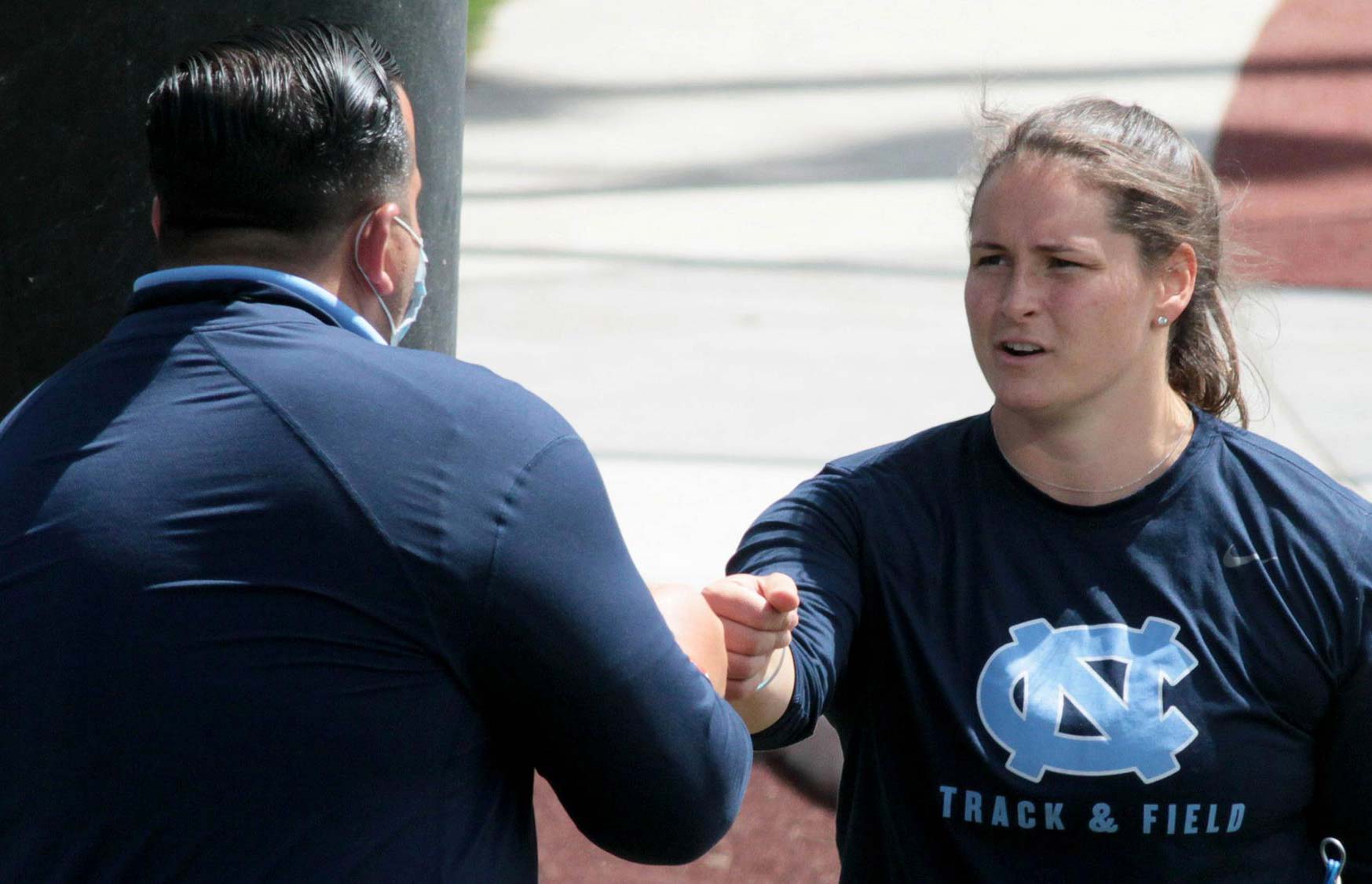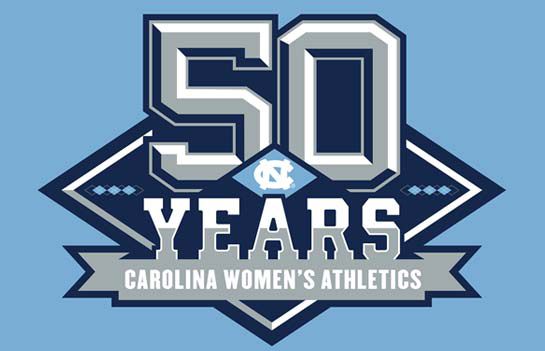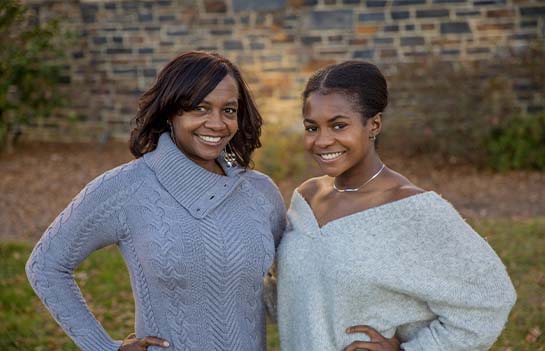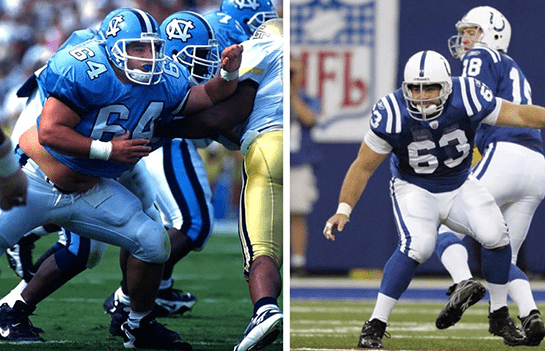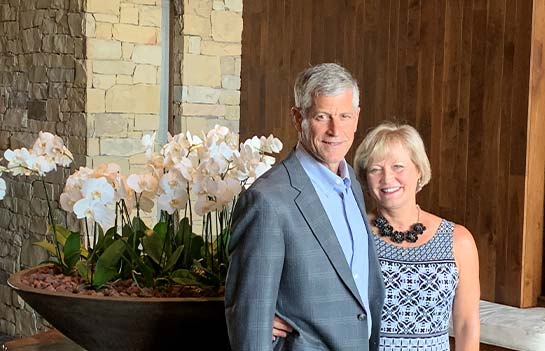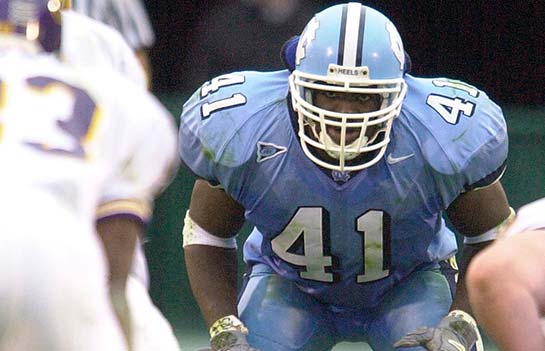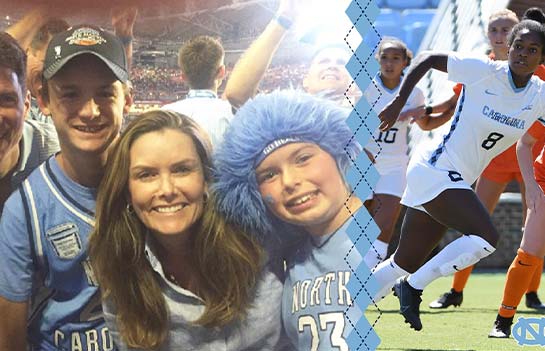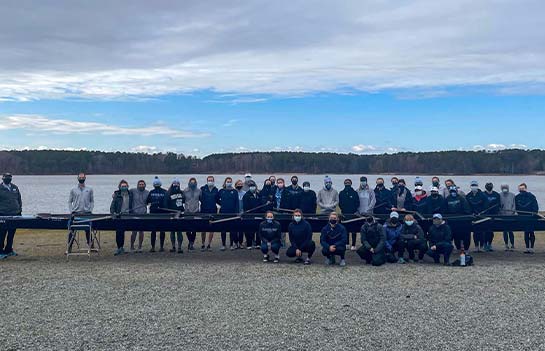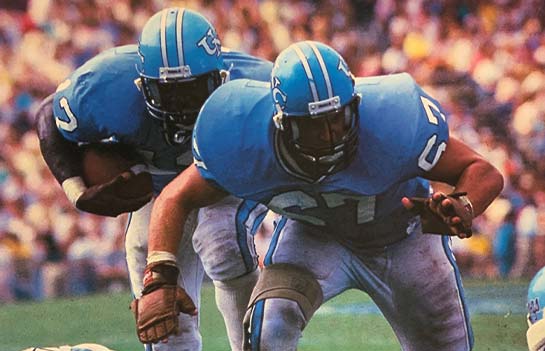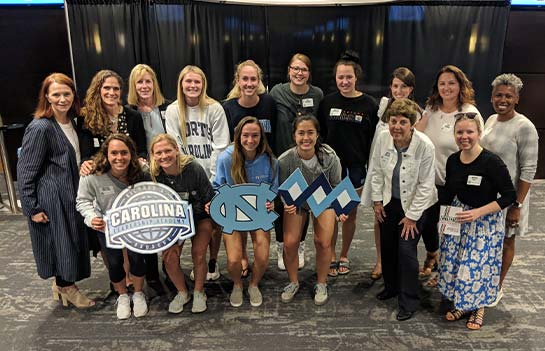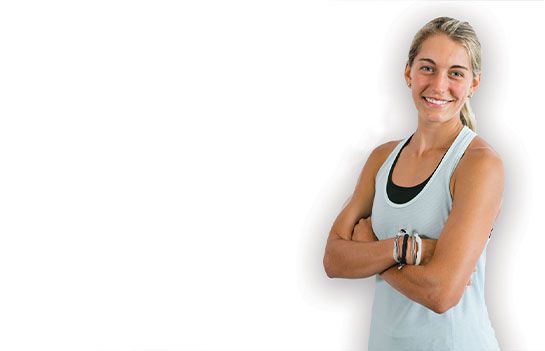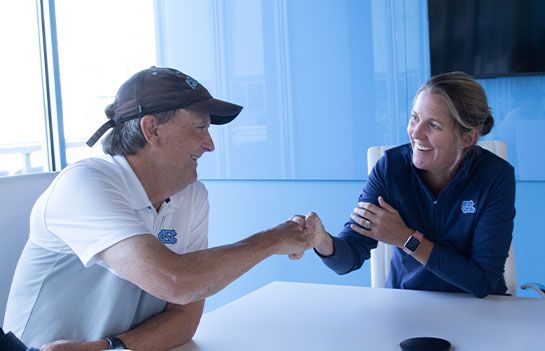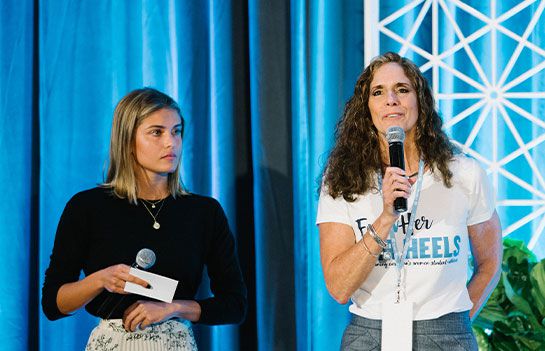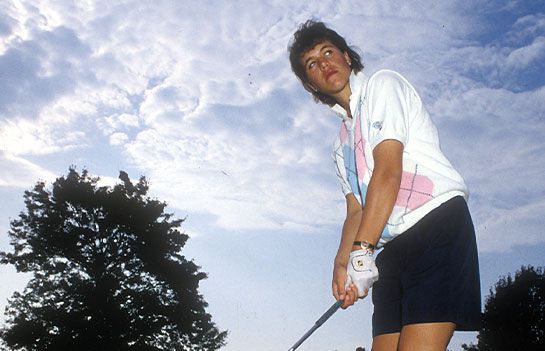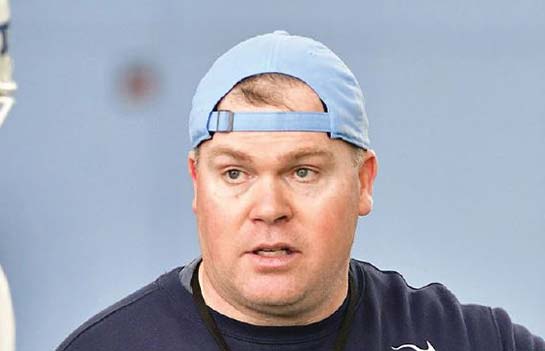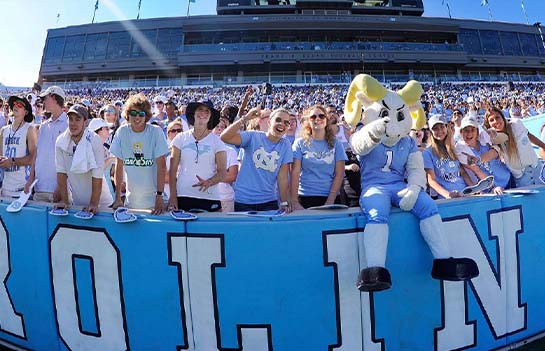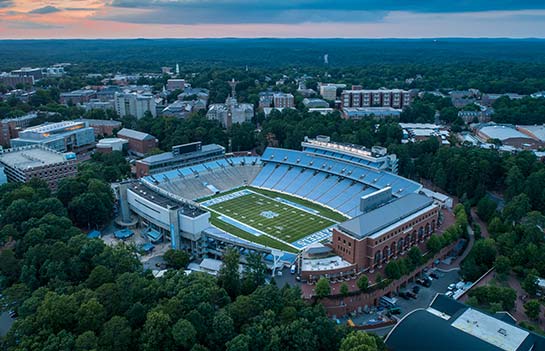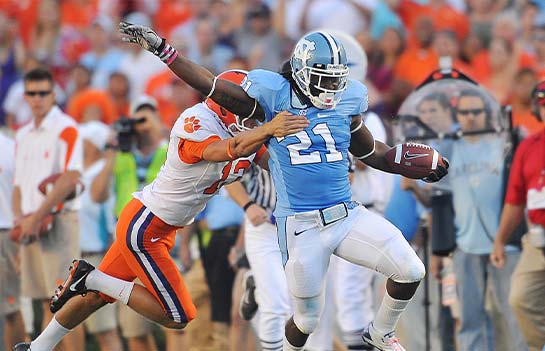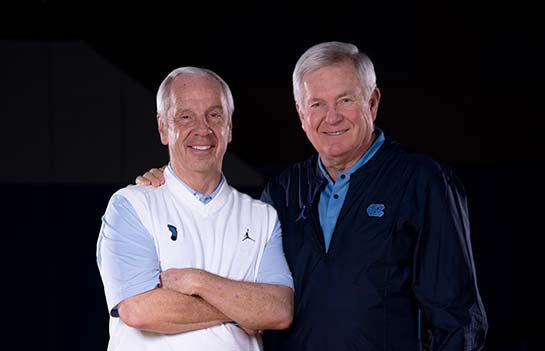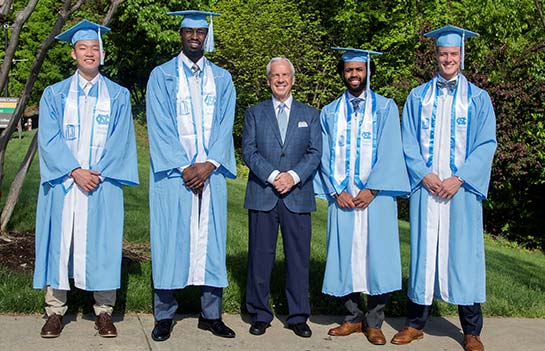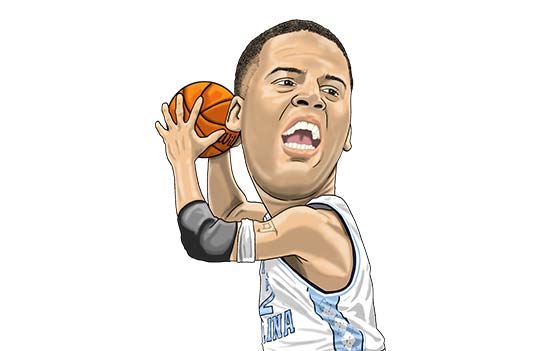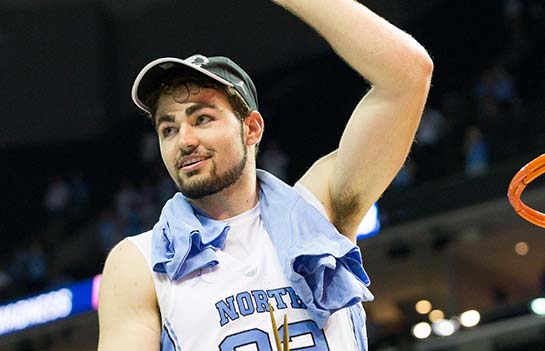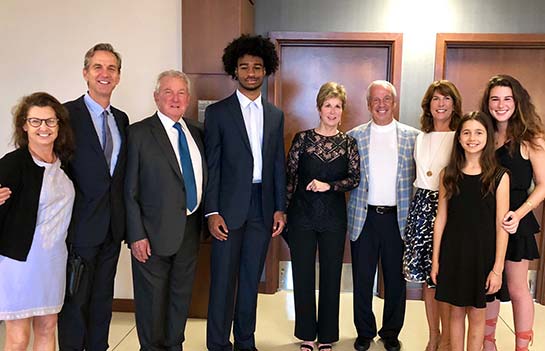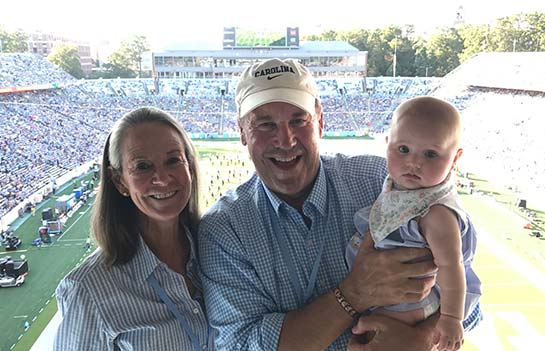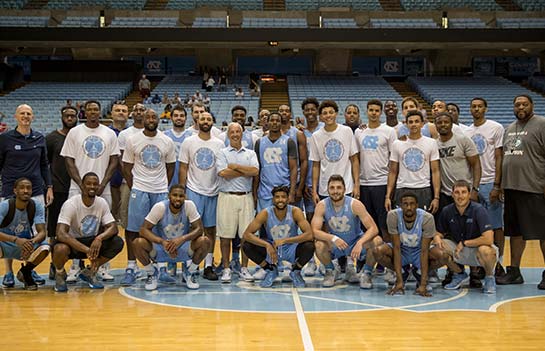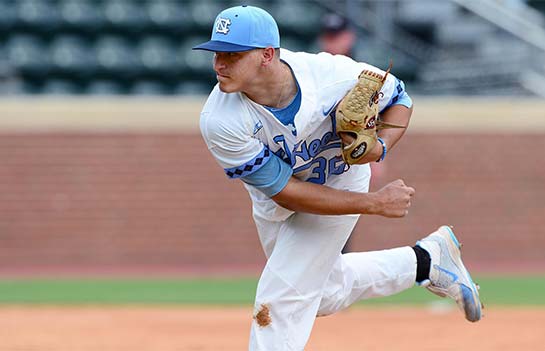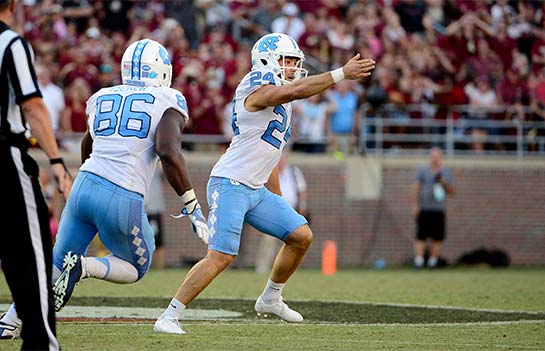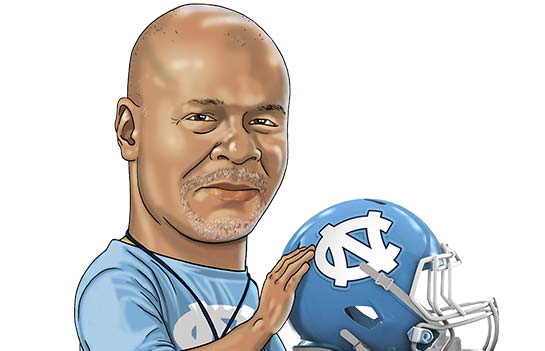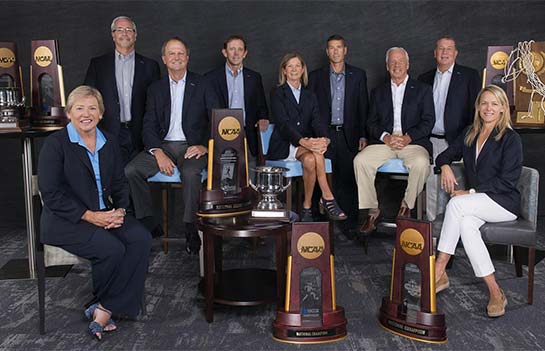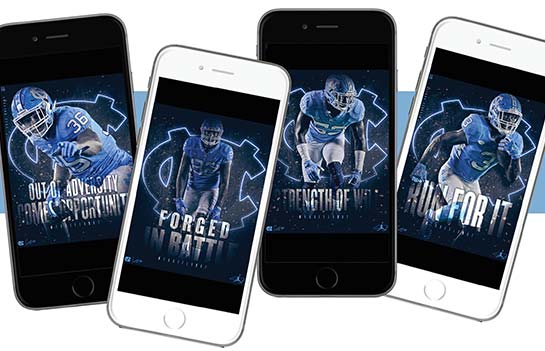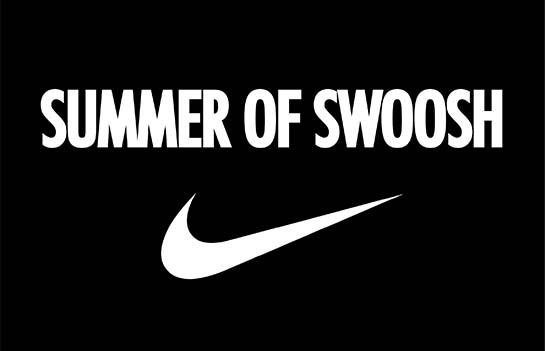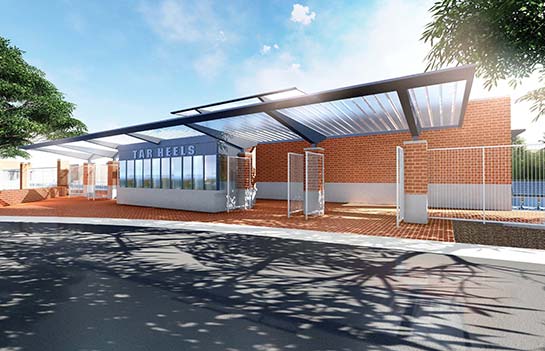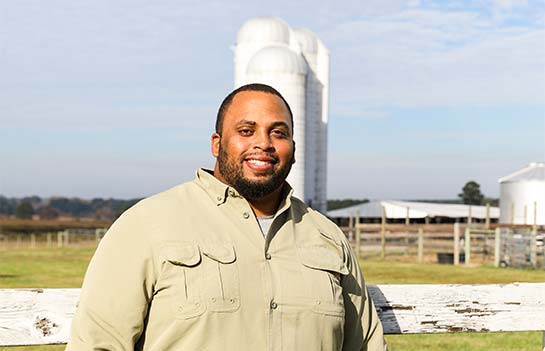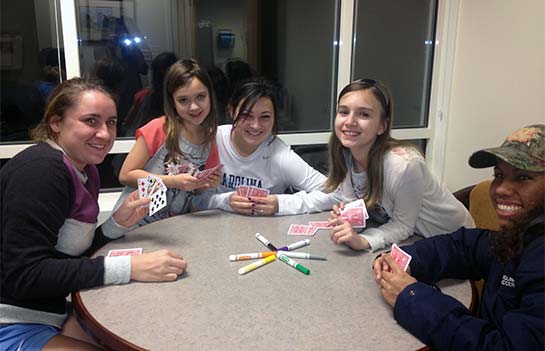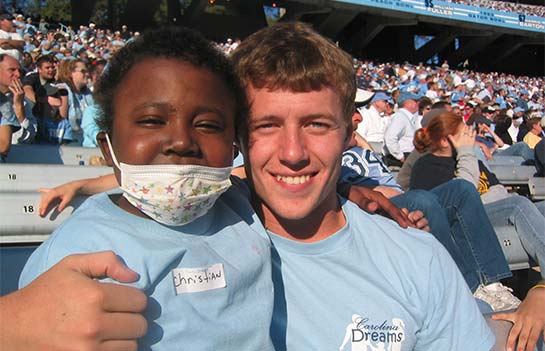ON THE AIR
HOW BUYING LUNCH TURNED INTO THE OPPORTUNITY OF A LIFETIME
By: JONES ANGELL / Photos by: JEFFREY CAMARATI & J.D. LYON, JR.
The first piece of advice I ever received from Woody Durham was where to get lunch…well, sort of.
I had just started an internship with the Tar Heel Sports Network in the summer after my sophomore year in college and was hanging out in the THSN production studio, which used to be housed in the Bowles Room on the second level of the Smith Center. Woody and Mick Mixon entered the studio to cut some station liners for the network’s affiliates and I was there to “help” chief network engineer John Rose with the process.
When Woody entered the room I was completely starstruck. Woody Durham, the man who (unbeknownst to him) I had spent hundreds of hours with through the years, was there in the flesh. I had formed a relationship with Woody (again…unbeknownst to him) because we had been together, through the radio, for my entire Tar Heel fandom. Whether it was great moments like Rick Fox’s layup to beat Oklahoma in 1990, Bracey Walker blocking punts in the 1992 Peach Bowl or the Tar Heels winning the 1993 National Championship or tough moments…he guided me through them.
My job that day? My way to “help” with the production?
Go get Woody and Mick lunch.
I vividly remember driving to The Loop holding a twenty dollar bill thinking: “I have $20 of Woody Durham’s money…and it is AWESOME!”
Little did I know then that Woody would have such an enormous impact on my career.
While I had several opportunities through the years to be on the air in varying capacities with the Network, the first time I really sat next to Woody and considered myself part of the broadcast team was the 2005-2006 school year.
After 16 seasons with the THSN, Mick Mixon had left to become the play-by-play man for the Carolina Panthers and the Network filled his role with two people. A former athlete would take over Mick’s analyst duties (former All-ACC linebacker Rick Steinbacher would take that spot on the football broadcast while 1993 National Champion Eric Montross handled that role…and still does…on the basketball side of things) and I was asked to fill the role of “host” for our broadcasts. Being the “host” meant I would lead our pregame, halftime and postgame shows, get the broadcasts out of commercial breaks and throw in some side commentary from time-to-time.
I made the decision to prepare for every broadcast as though I was going to do the play-by-play. I felt as though it would help me if and when I became a play-by-play man for a school (my ultimate goal) in the future because it would get me in a routine of preparation.
The first game I filled my new role was the season opener to the 2005 Carolina football campaign in Atlanta against Georgia Tech. I studied as I never had before thinking I was going to be the most prepared person in Bobby Dodd Stadium. That thought lasted until the moment I walked in our broadcast booth and saw the amount of information Woody had in front of him. It was as though he was preparing to launch a space shuttle. There were boards and cards and pushpins and multi-colored pens and handwritten notes written in vibrant colors all laid out in a careful system for use during the game.
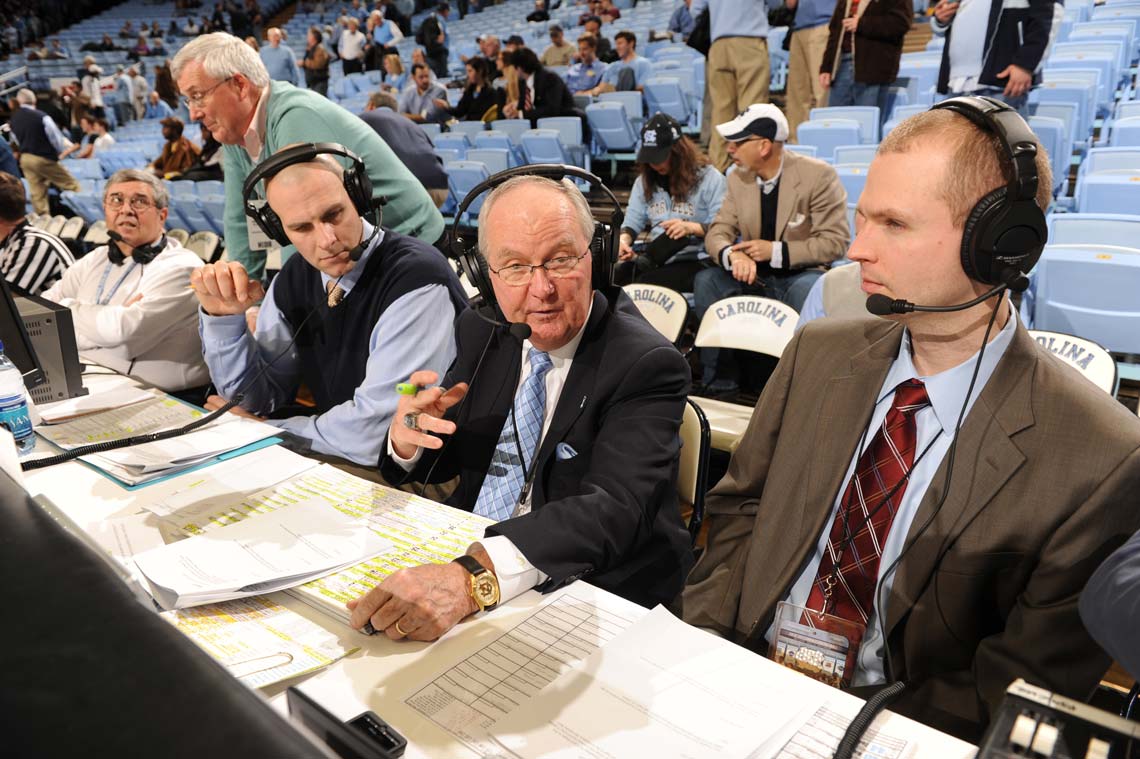
That moment provided the best two pieces of advice I have received as a broadcaster.
1) Always come prepared.
2) Create a system of preparation and display you believe in.
The first point is pretty self-explanatory. Preparation is what separates good from great. Read. Watch film. Talk to coaches and players. Find stats and stories which can supplement your broadcast and help explain the major storylines of the game. The trickiest part of this is, of course, you never know what the story of a game is going to be so you never know which piece of preparation is going to be useful. Woody would always say, and I believe, “You only use five to ten percent of your preparation for a game, but you never know which five to ten percent it is going to be.”
Can that be frustrating? Sure. But when you have the perfect stat or note for a relevant moment in the game…it is pretty satisfying (in a nerdy, broadcasting sort of way).
The second point is just as important. You need to come up with a system of how you prepare for your broadcast (for example, during football season I have benchmarks at the end of every day of the week marking where I need to be in my preparation for the game) and you need to come up with a display which allows you to easily find and use your stats, stories and notes when they become relevant. It does you no good to have a tremendous piece of information which would greatly supplement your broadcast if you can’t find and recite it in a timely manner.
There is no “right” way to display your informat ion… i t just has to make sense to you. Could I have sat down in front of Woody’s material that day in Atlanta and done the broadcast? Probably not. Just like another broadcaster couldn’t comfortably use my material right now.
And that was just Day One!
Over the next six seasons I tried to take in as much information on how Woody had been successful as I possibly could (Never ask a question which can be answered with a simple ‘yes’ or ‘no’…Use different colors for different notes giving you an easy visual cue when looking for information). While I certainly don’t do everything just like Woody did (for example: I do everything via computer while Woody hand wrote all his information) the foundation is the same.
Not every piece of a successful broadcast can be or should so regimented or mundane as the preparation. There has to be some personality and emotion as well. On the present day Tar Heel Sports Network we try to live up to the standard set by Woody and his broadcast teams through the years in two areas: passion for Carolina and professionalism of the broadcast.
Here’s a big secret: on the Tar Heel Sports Network we want the Tar Heels to win. Everything we do is made better and easier when Carolina is successful; however, we have a job to do as well. While there is no doubt we are there for the Heels, we don’t want to be such a “homer” broadcast that every penalty against Carolina is a bad call or every four yard run or 12-foot jumpshot is the greatest we’ve ever seen. Plus, if someone for the opposition passes for 500 yards or scores 35 points and has 12 rebounds, that’s a story too… even if it isn’t the one we want to tell.
Easily, the time that passion/professionalism balance was most tested was after the 2016 National Championship game when Villanova topped the Tar Heels at the buzzer. The Villanova family section was directly behind our broadcast location and at the conclusion of the game the Wildcat players were standing on our table, reaching over us to hug loved ones and celebrating the way you would expect in that moment for them. It was extraordinarily difficult to keep it together on the air because of the disappointment you felt for Carolina and the hurt you knew the Tar Heel players/coaches/fans were experiencing while getting a literal front row view of the elation of the other side. We made it through without any expletives (I think) and took the broadcast to conclusion as professionally as we could. I will always credit the training I received during my years of working with Woody for helping in that difficult spot.
Very few sports broadcasters have been afforded the opportunity to learn from the people I have been able to learn from. I was able to sit next to, talk to, take notes from and receive direct advice from some of the most accomplished people in our business. Some of those lessons are put into place on every single broadcast we have on the Tar Heel Sports Network.
I can’t tell you how fortunate I feel to have learned those lessons, put them into use and to have been driving to The Loop that day in the summer of 1999 with $20 of Woody’s money in my hand.
This story appeared in the FEBRUARY 2018 edition of Born & BredMore Stories
The impact of giving comes through in wonderful stories about Carolina student-athletes and coaches, as well as the donors who make their opportunities possible. Learn more about the life-changing impact you can have on a fellow Tar Heel through one of the features included here:
